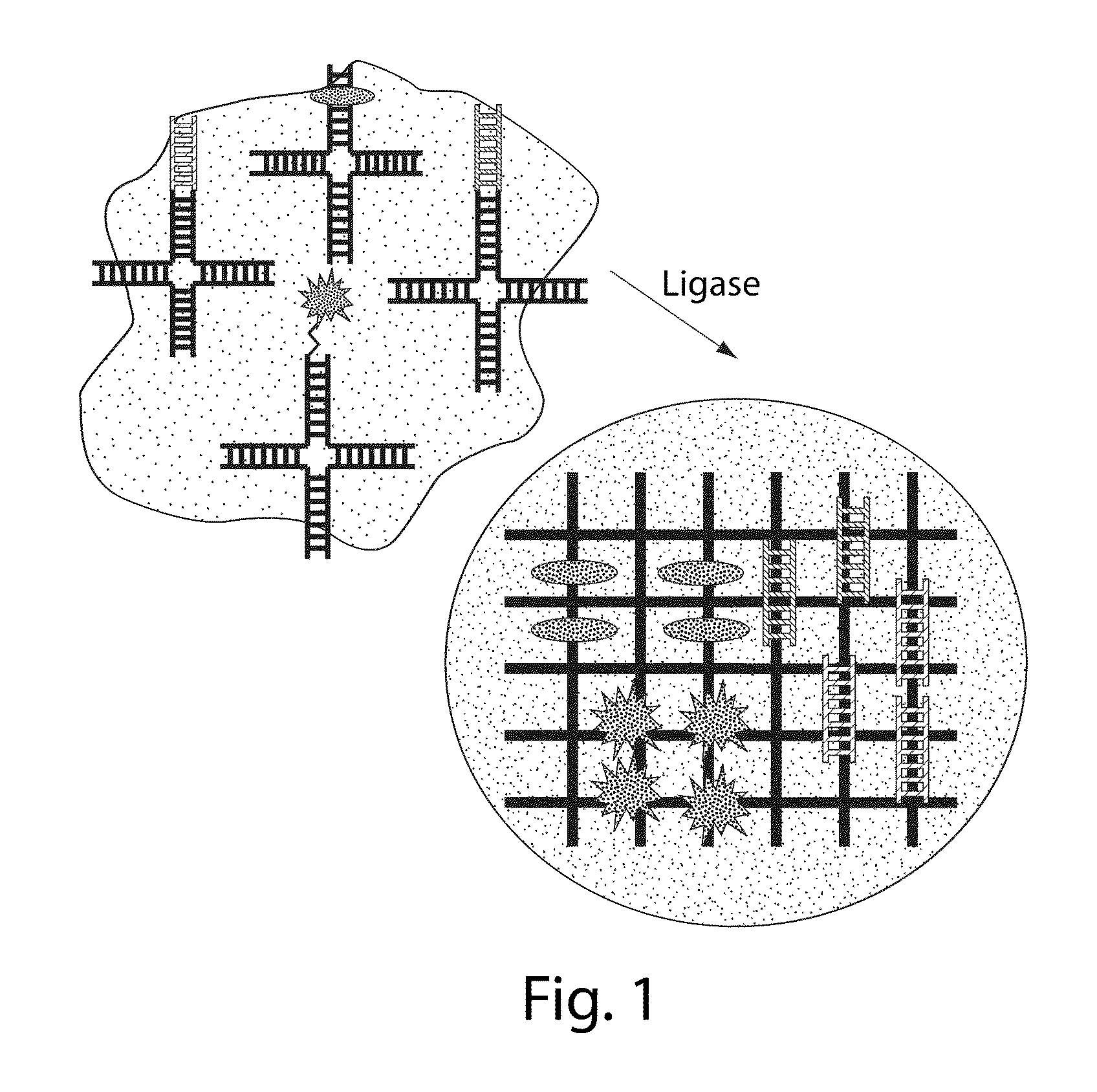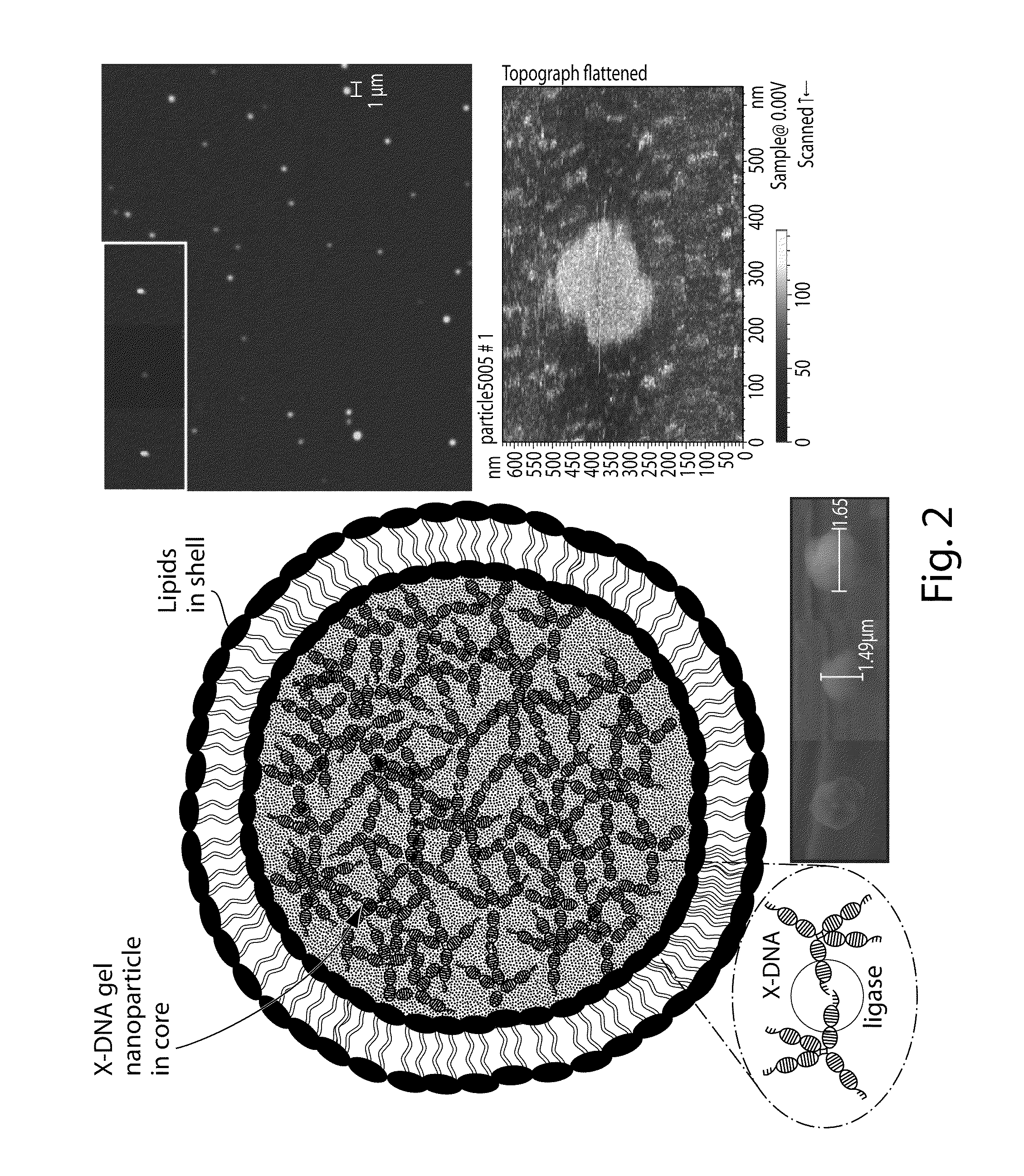Branched DNA/RNA monomers and uses thereof
a branched dna and rna monomer technology, applied in the field ofbranched dna/rna monomers, can solve the problems of limited ability unstable liposomes, and inability to regulate the release of hydrophobic compounds, and achieve significant silencing activities, reduce interference activity, and reduce the effect of some sirna forms
- Summary
- Abstract
- Description
- Claims
- Application Information
AI Technical Summary
Benefits of technology
Problems solved by technology
Method used
Image
Examples
examples
[0207]Synthesis of DNA nanogels with or without a lipid coating. The overall structure of exemplary DNA nanogels and an exemplary synthetic process (using “X-DNA” monomers) for their production is outlined in FIGS. 2 and 3, respectively. As summarized in FIG. 3, the nanogels are synthesized by a simple multistep process. First, X-DNA monomers (or building blocks), composed of 4 individual DNA strands designed to hybridize with one another into a characteristic 4-armed structure are prepared using standard molecular biology techniques. See also published US patent applications US 20070148246 A1 and US 20050130180 A1. These DNA building blocks are then encapsulated into liposomes by rehydrating a dried phospholipid film in a vial with an aqueous solution of X-DNA and the crosslinking enzyme T4 ligase, and sonicating the lipid / DNA / enzyme mixture briefly. The size of the liposomes formed establishes the size of the resulting DNA nanogels. These liposome-like entities may then be size se...
PUM
| Property | Measurement | Unit |
|---|---|---|
| Time | aaaaa | aaaaa |
| Size | aaaaa | aaaaa |
| Size | aaaaa | aaaaa |
Abstract
Description
Claims
Application Information
 Login to View More
Login to View More - R&D
- Intellectual Property
- Life Sciences
- Materials
- Tech Scout
- Unparalleled Data Quality
- Higher Quality Content
- 60% Fewer Hallucinations
Browse by: Latest US Patents, China's latest patents, Technical Efficacy Thesaurus, Application Domain, Technology Topic, Popular Technical Reports.
© 2025 PatSnap. All rights reserved.Legal|Privacy policy|Modern Slavery Act Transparency Statement|Sitemap|About US| Contact US: help@patsnap.com



